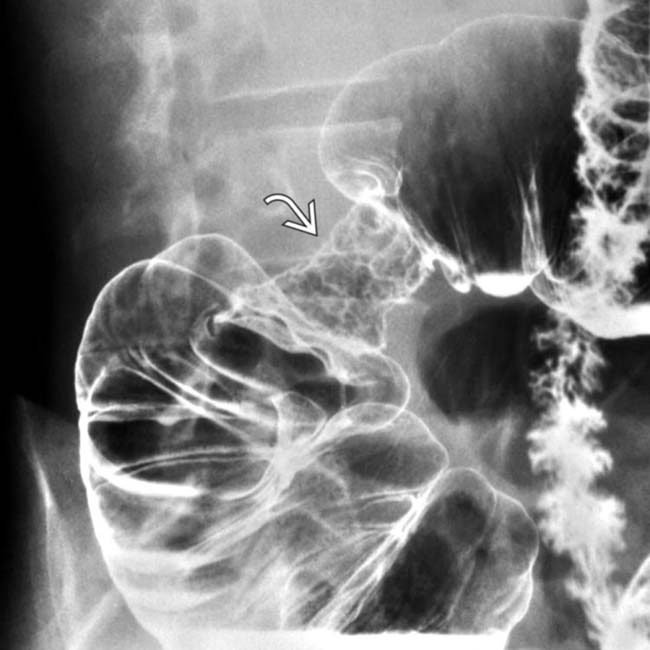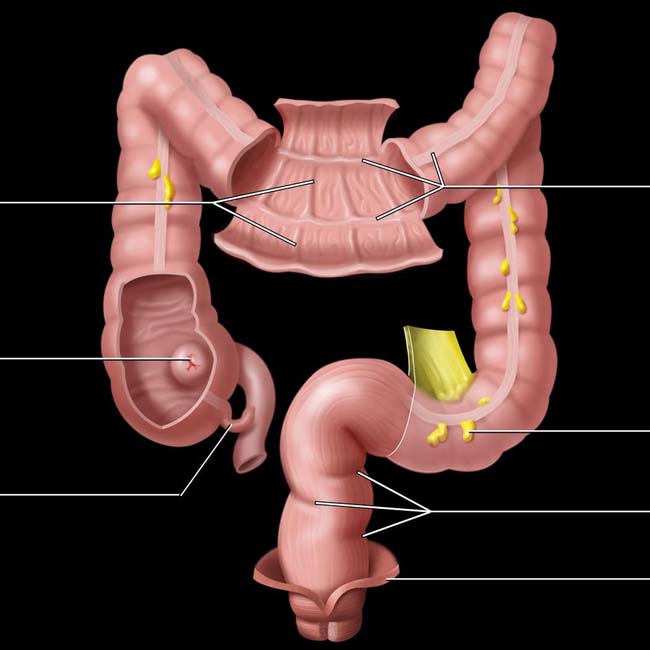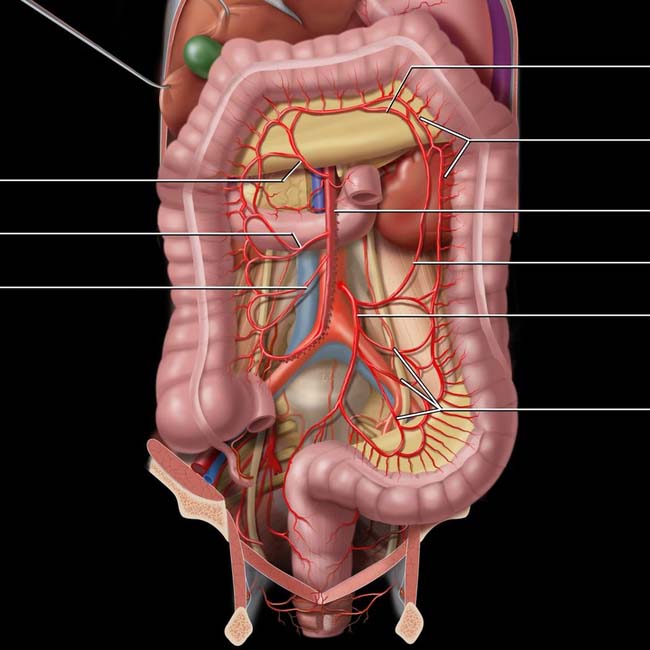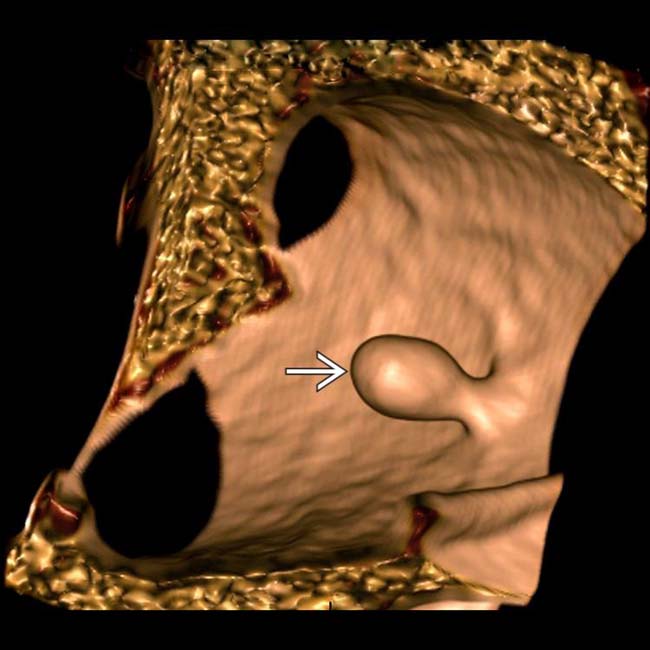
 . Abrupt, short segment narrowing is typical of malignant lesions.
. Abrupt, short segment narrowing is typical of malignant lesions.
Ileocecal valve
Appendix
Taeniae coli
Epiploic appendage
Rectal valves
Levator ani muscle
(Top) Graphic shows the surface and mucosal views of the colon. Three flat bands of smooth muscle, the taeniae coli, run the length of the colon. The semilunar folds lie at right angles to the taenia creating the haustra.

Right colic artery
Ileocolic artery
Arc of Riolan
Marginal artery (of Drummond)
Superior mesenteric artery
Left colic artery
Inferior mesenteric artery
Sigmoid arteries
(Bottom) The superior mesenteric artery supplies the colon from the appendix through the splenic flexure, with the inferior mesenteric artery supplying the descending colon through the rectum. These arterial branches are highly variable. All are connected by anastomotic arterial arcades and by the marginal artery (of Drummond) and arc of Riolan, which also anastomose with branches of the inferior mesenteric artery that feed the descending and sigmoid colon.

Buy Membership for Radiology Category to continue reading. Learn more here




